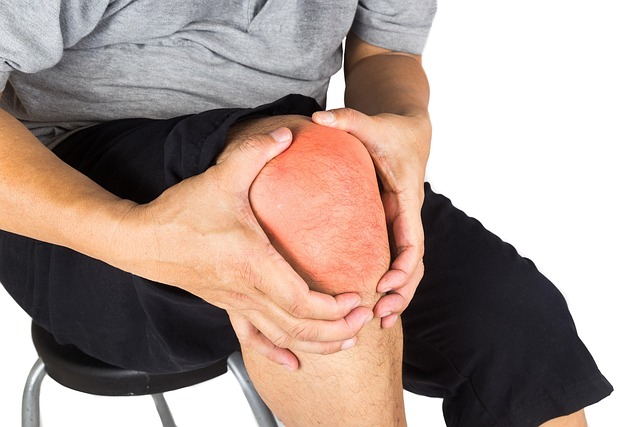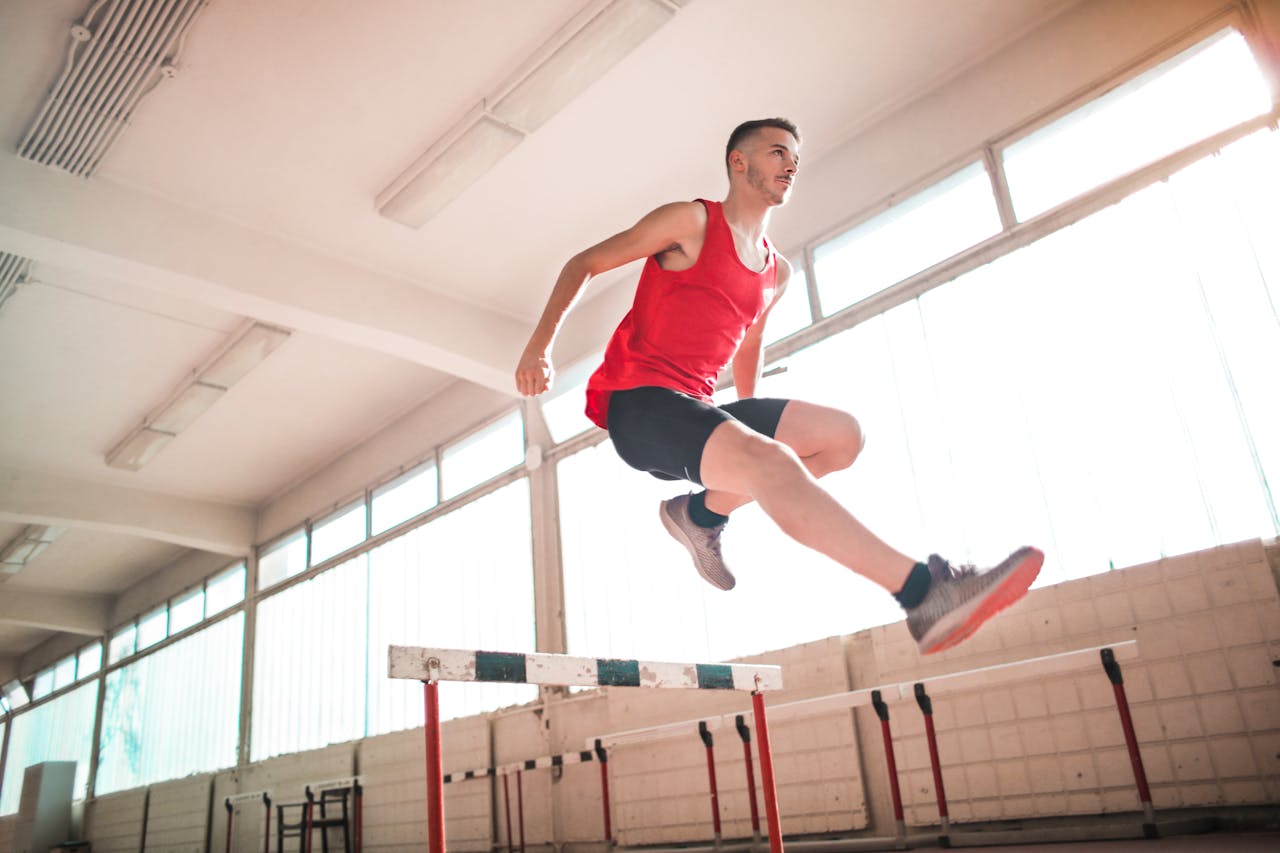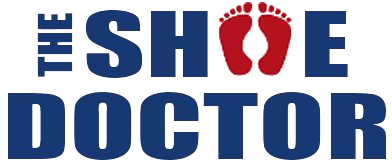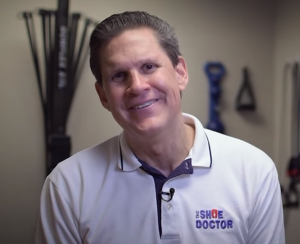So to answer the question, should you try orthotics or physical therapy first, it all depends on the cause of your foot/leg pain, your history and your daily needs. Orthotics are inserts for your shoes that provide additional support and alter your gait, best for issues like flat feet or arch discomfort. Physical therapy helps build strength, relieve tightness, and correct your movement, commonly utilized for injuries or imbalanced muscles. Both work great, but your doctor can help decide what is most appropriate for your pain/injury. The following section examines both orthotics and physical therapy in depth, explains when each one is most effective, and provides advice for choosing the right path for your treatment.
Key Takeaways
- Knowing the fundamental distinction between orthotics (passive correction) and physical therapy (active correction) is the first step in choosing the right treatment for your foot problems.
- Orthotics can provide immediate pain relief and structural support, beneficial for individuals with acute pain, severe pronation, or structural deformities.
- Physical therapy gets at the root muscular weaknesses and bad biomechanics — delivering a longer-term solution by strengthening foot muscles and retraining movement.
- A hybrid approach of both orthotics and physical therapy might provide the best of both worlds, with orthotics easing pain as physical therapy encourages long-term functional gains.
- Personalized evaluation and customization of both orthotics and therapy plans, under the guidance of medical professionals, optimize the efficacy and safety of interventions.
- Taking care of your feet can help improve your body’s alignment, prevent related pain in the knees, hips, and back, and set you on the path toward a lifetime of wellness.

The Core Difference
Orthotics and physical therapy are different at their core. Orthotics act as passive support, providing the foot and ankle a stable foundation. Physical therapy is active correction, where you’re trying to change and improve the way your foot functions. Understanding this difference allows you to select the optimal treatment for your needs and lifestyle.
Feature | Passive Support (Orthotics) | Active Correction (Physical Therapy) |
Purpose | Stabilize and support foot | Correct muscle imbalance and movement |
Method | External device (insole) | Exercises and manual techniques |
Personalization | Custom or prefab fit | Individualized exercise plans |
Duration of effect | Immediate but dependent on use | Slow, long-lasting change |
User effort | Minimal (wear device) | Moderate to high (active participation) |
Typical users | Chronic pain sufferers, those on feet often | Athletes, those seeking long-term change |
Passive Support
Orthotics assist foot alignment by providing extra support where your foot requires it. They can redirect pressure from sore spots, assisting those with plantar fasciitis, flat feet, or high arches. Custom orthotics are designed specifically for the shape of your foot. This makes them a solid option for professions that require a lot of standing and walking, such as nurses or retail associates. Studies reveal custom orthotics can reduce pain and increase your mobility — sometimes within a matter of months.
Most people experience less pain and more comfort on a daily basis by wearing custom orthotics. They’re designed to endure and usually outlive commercial insoles. Some research suggests that prefab and custom orthotics can actually fare about the same for pain. Still, custom ones can tend to feel better and wear longer.
- Prefabricated insoles for general support
- Custom orthotics for unique foot shapes
- Heel cups and pads for shock absorption
- Arch supports for flat feet
Active Correction
Physical therapy is about correcting the foot motion. {them} therapists use exercises to strengthen weak muscles and improve joint function. It gets to the source, it doesn’t just treat the symptoms. Say your ankle rolls in too much – your therapist can train you on balance drills and stretches to remedy this.
Then, manual therapy is a big part of physical therapy, too. Therapists may employ hands-on maneuvers to enhance joint mobility and decrease rigidity. Eventually these actions help retrain the foot, resulting in improved walking or running gait. The core difference is that intervention can drive sustainable transformation, not temporary palliative.
Physical therapy requires more work from you. It’s ideal for those who wish to solve the symptom, not simply cover it up. You may want to pair it with orthotics for optimal effect, particularly if you’re nursing an injury.
When Should You Try Orthotics First?
Orthotics, meanwhile, are the remedy of choice when structural foot issues, the need for instant relief, or severe pronation are involved. In numerous instances, orthotics should be the first resort — particularly if the pain or dysfunction is related specifically to the anatomy or biomechanics of the foot. In the table below, various situations emphasize when orthotics or physical therapy may be more appropriate.
Scenario | Orthotics First | Physical Therapy First |
Acute foot pain | Yes | Sometimes |
Severe pronation | Yes | No |
Structural deformities (flat feet) | Yes | No |
Sports injury (non-structural) | Sometimes | Yes |
Post-surgical rehab | No | Yes |
Chronic plantar fasciitis | Yes | Sometimes |
Muscle weakness | No | Yes |
Structural Issues
Flat feet or high arches can disrupt the way the body lines up, causing leg or back pain. In these cases, orthotics assist by providing the support where it’s absent. Feet that excessively roll in or out, known as overpronation or supination, respectively, commonly cause pain that radiates up the kinetic chain. Orthotics do well for fallen arches, stiff-high arches or bunions. By keeping the feet in a healthier position, they reduce strain and prevent new injuries from cropping up. Here’s why it’s important to get your foot alignment right for protecting the rest of your body.
Immediate Relief
Orthotics can quickly relieve pain from things like plantar fasciitis or Morton’s neuroma. They relieve pressure off sore spots, allowing people to walk or stand with less pain during everyday activities. This speedy relief keeps you moving. If you wait weeks for physical therapy, the healing will stall. Begin with short wear, such as 1–2 hours, which aids comfort. Some acclimate to orthotics in days, while others may require as long as three weeks.
Severe Pronation
Severe pronation means the arch collapses too much with every step. Over time, this puts strain on the ankles, knees, and hips, occasionally leading to larger joint issues. Orthotics support the arch and prevent the foot from over-pronating. Correcting pronation in its early stages can prevent the development of chronic pain or injury. Others require custom orthotics for optimal fit.
Activity Modification
Orthotics allow individuals to return to their athletic pursuits or extended strolls pain-free. Runners, hikers, and standup workers are known to swear by them to prevent injury or get back in the game post-trauma. They nudge lifestyle changes—like more walking or new exercise—by providing the feet the proper support. Wear time should be initially low and then build as comfort develops.
When Should You Try Physical Therapy First?
Physical therapy is usually the initial step for a lot of musculoskeletal problems. It can be effective for long-term pain, motor issues, or when the underlying issue is unknown. Targeting muscular weakness, addressing poor biomechanics, and treating the connection between back pain and your feet with therapy will get you better long-term results than orthotics alone.
Muscular Weakness
- Common weaknesses that cause foot pain are weak calf muscles, under-active foot muscles leading to poor arch support, and weak glutes or core.
- Therapy can then target these groups with exercises like heel raises, toe curls, and hip strengthening. These motions assist in stabilizing the foot and balancing.
- Therapists construct exercise regimens tailored to the individual. They test to see what muscles are missing and tailor workouts accordingly.
- Strengthening weak muscles provides long-term relief and prevents recurring pain. It’s an essential component to real recovery, not quick patch.
Poor Biomechanics
Poor movement patterns place stress on the foot and ankle. These could be bad habits from flat feet, high arches, or walking with feet turned in or out.
Physical therapy observes your movement and posture. A therapist might observe you walk or deploy video to identify subtle problems. Gait training, balance work, and posture drills can repair these issues. They employ hands-on techniques to retrain your muscles.
A thorough check up front ensures you make a plan that fits you. That can result in less pain and improved motion down the line. Catching biomechanics early means avoiding bigger injuries and staying active.
Back Pain Link
Your feet can mess with your back. For instance, flat feet can alter the way forces course up your legs, causing back strain.
Therapists can address both zones with a combination of stretching, strength work, and manual therapy. They search for how one issue creates another. Put the foot right and you can put the back pain right too – vice versa.
Physical therapy takes a whole-body perspective. It doesn’t just address the specific painful location but looks for associated issues.
Long-Term Solution
Therapy is great for people who want long-term results. It develops strength and stretch in the muscles and joints. This gets you moving and prevents the pain from returning.
Therapists locate the root cause of pain, not just the symptoms. They educate you on how to treat your feet and prevent further damage.
The Synergy of Both
Custom orthotics and physiotherapy together can address both the symptoms and the causes of foot pain. This combined approach not only relieves pain, but sets the stage for improved mobility and sustained comfort.
Support and Strengthen
Custom orthotics function by distributing body weight throughout the foot, which alleviates pressure from painful areas and maintains the foot in an optimal position. This assistance is crucial for anyone experiencing pain from standing or running, as it can help stabilize the foot throughout everyday activities or athletics.
Physical therapy steps in by emphasizing strengthening of the foot and ankle musculature. With the foot supported by orthotics, therapy can hit weakness or stiffness without threat of poor alignment. These two treatments have synergy—orthotics keep the foot in the correct position and therapy helps the foot function optimally and increase strength.
Good alignment in therapy not only makes exercises safer, but more effective. Over time, this can translate to improved walking, diminished pain, and increased mobility. Runners and anyone who clocked hours on their feet can capitalize on this support-and-strengthen formula.
Phased Approach
A phased plan makes use of each method at the right time for optimal results. First, orthotics can be applied to soothe pain and correct foot alignment. Once the pain subsides, physical therapy can begin, with an emphasis on strengthening and increasing flexibility in the foot and lower leg.
- Acute pain: Use orthotics for pain relief, then add therapy.
- Chronic problems: Begin with both, but shift focus over time as needs change.
- Injury rehab: Orthotics help healing at first, therapy restores movement.
- High-use cases: Workers or athletes may need both from the start.
Regular audits are required to monitor progress. Providers should collaborate, exchanging notes and modifying measures as the individual’s requirements evolve.
Customization
Custom orthotics are molded to each foot, so they fit and work better. Off-the-shelf insoles can’t compete with this kind of support, so having orthotics customized for you can equate to less pain and improved movement.
Physical therapy needs to be tailored. Each person has a different walking style, strength, and level of tightness, so exercises should match those needs. Health pros, like podiatrists and physiotherapists, play a key role in this—by checking, testing, and making plans that fit each person.
Personal attention such as this isn’t merely more comfortable but can assist in preventing foot issues from reoccurring. It’s the combination of encouragement, activity, and professional coaching that produces the magic.

Beyond Your Feet
Your foot health plays a more important role in the functioning of your body than most people realize. The form and function of your feet govern the way forces travel up the legs and spine. When feet are not functioning properly, discomfort or compensation can present itself elsewhere—sometimes in the knees, hips or lower back. Ragged feet can compromise your mobility. Taking care of your feet does more than ease localized aches — it can contribute to better comfort, mobility and health for your entire body.
Making Your Decision
The orthotics vs physical therapy debate begins by examining your specific needs, objectives, and how pain affects your day-to-day activities. They both have their advantages, the correct course is determined by pain, activity and medical professional advice.
Assess Your Pain
Taking an inventory of the kind and intensity of pain comes first. For mild pain, rest and easy modifications to footwear can assist, but if the pain is persistent or intense, it can indicate more serious problems. Pain that is acute or movement limiting typically requires immediate care. In such cases, it’s smart to see a doctor first — particularly when pain is sharp, unexplained, or associated with injury. Acute injuries or pain that interferes with daily function are screaming reasons to consult a doctor before initiating therapy or orthotics.
Trace the pain patterns–how long they last, when do they get worse, what relieves them–can assist in making the decision. For some, pain is felt after extended walking or standing, for others it is present at rest. Sharing this information with doctors helps to make sure the treatment fits the underlying issue — not just the symptoms. That clear communication helps prevent delayed or inappropriate care.
Consider Your Lifestyle
Daily habits impact foot health more than you think. If you’re an active or on your feet for hours type of person – runner, athlete, whatever, orthotic can really help add support and take some of the shock. These can minimize fatigue, prevent injury and preserve your output. Conversely, those with largely sedentary lives can become plagued by weak muscles or stiff joints. For them, PT provides focused movement to strengthen and stretch.
Not every answer works for each lifestyle. One person taking 12 hour shifts on tile floors might find orthotics reduce pressure, while another emerging from an extended illness may require therapy to rebuild function. Aligning treatment with everyday demands avoids exasperation and accelerates healing.
Professional Guidance
Professional advice is the ticket. Physical therapists know the musculoskeletal system and can detect issues early, frequently being the initial treaters of foot pain. They devise personalized programs that tackle symptoms and cause, fine-tuning treatment as you make headway. For those with severe or unexplained pain, systemic symptoms, or without a clear diagnosis — a doctor’s evaluation comes first. Doctors can eliminate more general health issues and refer patients to specialists, if necessary.
Experts lead patients through difficult decisions, assisting in deciding between orthotics and therapy. They think about things like duration of the treatment, outcomes, and long-term health goals. Prehab prior to surgery, handled by a therapist, can accelerate your recovery and provide realistic expectations.
Conclusion
To choose between orthotics and physical therapy, consider your pain, your objectives, and what seems best for your lifestyle. Orthotics make sense for people who require fast foot support, such as runners or those with flat feet. Physical therapy provides a hands on solution for those who want to address movement or strength, not just in the feet but the entire body. Others get the most assistance by trying both simultaneously. There is no one size fits all answer. Tiny steps count, so begin with what suits your agony or ease. To hear more tips, or share your own story, join the conversation on our blog! Your feet, your journey–we’ll walk it together.
Frequently Asked Questions
1. What is the main difference between orthotics and physical therapy?
Orthotics are custom or pre-made shoe inserts that help support your feet. Physical therapy leverages exercises and hands-on treatments to enhance movement and alleviate discomfort.
2. When should you try orthotics before physical therapy?
Go with orthotics first if you have flat feet, high arches, or particular foot alignment problems. They can assist with structurally-induced foot pain.
3. When is physical therapy the better first choice?
PT is best if your pain is due to muscle weakness, injury or joint stiffness. It treats the entire body, not just the feet.
4. Can you use orthotics and physical therapy together?
YES, often combining both brings better results. Orthotics support your feet, and physical therapy works on strength and flexibility.
5. Are orthotics or physical therapy only for foot problems?
No, both can aid with knee, hip and back pain. Foot problems can impact your entire body’s biomechanics.
6. Do you need a doctor to get orthotics or start physical therapy?
A doctor or trained specialist should evaluate your needs. They can assist you in determining the best choice and refer you to appropriate care.
7. How long does it take to see results from orthotics or physical therapy?
It depends. Some experience relief in days, others require weeks. Consistency and listening to your provider are important.
Struggling With Back or Knee Pain? Find Real Relief With Custom Orthotics From The Shoe Doctor
If everyday movements leave you dealing with nagging back pain or aching knees, your feet may be part of the problem. Misalignment in your foundation can place extra stress on joints and muscles higher up in your body. At The Shoe Doctor, our custom orthotics are designed to correct that imbalance, reduce pressure, and restore comfort so you can move freely again.
With over 20 years of experience, Russell uses advanced 3D foot-mapping technology to create orthotics tailored to your exact foot shape and movement. These orthotics do more than add cushioning—they improve alignment, support your stride, and help prevent pain from coming back. Through our partnership with the Spine & Injury Medical Center in San Jose, we also make sure your whole-body mechanics are addressed for lasting relief.
If you’re in the South Bay Area, schedule your free consultation today. Let The Shoe Doctor help you move pain-free and reclaim your day, starting from the ground up.
Disclaimer
The materials available on this website are for informational and entertainment purposes only and are not intended to provide medical advice. You should contact your doctor for advice concerning any particular issue or problem. You should not act or refrain from acting based on any content included in this site without seeking medical or other professional advice. The information presented on this website may not reflect the most current medical developments. No action should be taken in reliance on the information contained on this website, and we disclaim all liability for actions taken or not taken based on any or all of the contents of this site to the fullest extent permitted by law.


